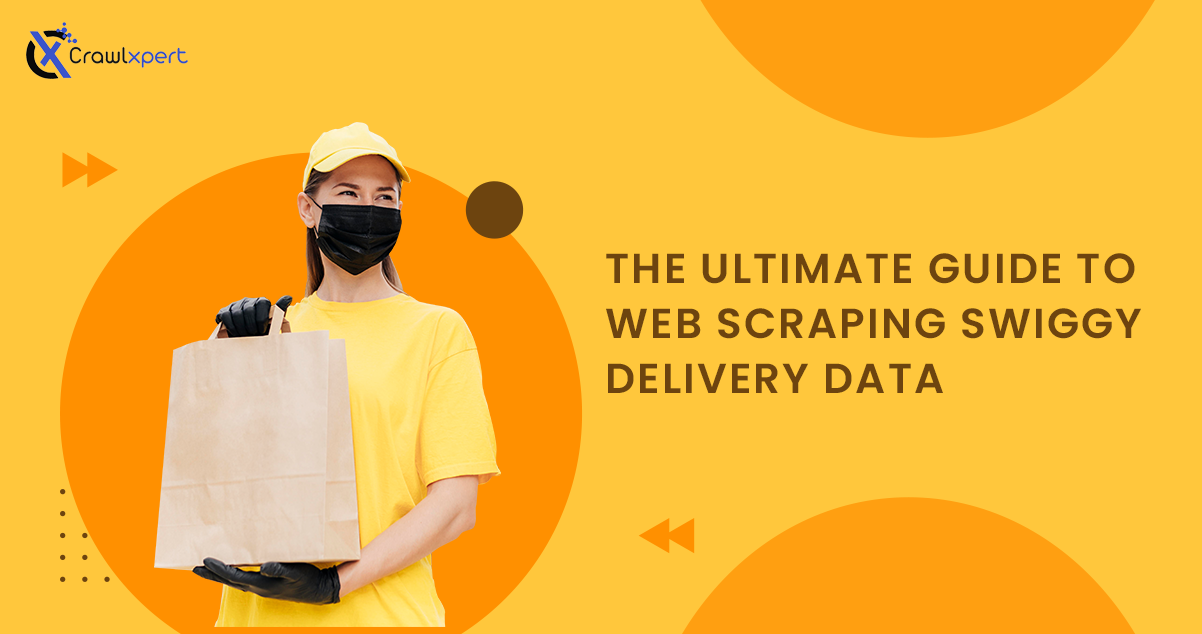
The Ultimate Guide to Web Scraping Swiggy Delivery Data
2025 July 04
Introduction
In today's digital era, food delivery platforms like Swiggy have revolutionized the way people order food. Businesses, researchers, and analysts are increasingly leveraging Web Scraping Swiggy Delivery Data to gain insights into market trends, restaurant performance, pricing strategies, and customer preferences.
This guide will provide an in-depth look at Swiggy Data Scraping, how to effectively Scrape Swiggy Delivery Data, and the tools required for successful Swiggy Delivery Data Harvesting.
Why Scrape Swiggy Delivery Data?
Market Research & Competitive Analysis
Businesses can use Swiggy Delivery Data Insights to understand competitors, track pricing trends, and optimize their own offerings.
Restaurant Performance & Customer Preferences
By analyzing Swiggy data, restaurant owners can identify popular menu items, adjust pricing, and optimize delivery services.
Price Monitoring & Trend Analysis
Food aggregators and research firms can leverage Swiggy Delivery Data Analysis to track changes in pricing strategies and customer demand over time.
Customer Sentiment & Review Analysis
Scraping customer reviews and ratings helps businesses understand consumer preferences and improve service quality.
Legal Considerations of Swiggy Data Scraping
Before starting, it is crucial to understand the legal and ethical aspects of Swiggy Delivery Data Extractor tools. Web scraping laws vary by region, and many platforms have Terms of Service that prohibit automated data extraction.
Key Considerations:
- Respect Swiggy's Robots.txt File – Always check and comply with Swiggy's robots.txt to avoid violating their policies.
- Do Not Overload Swiggy's Servers – Implement rate limiting and delays to avoid being blocked.
- Use Data for Ethical Purposes – Ensure that scraped data is used for analysis, research, or business intelligence without harming Swiggy or its users.
Setting Up Your Swiggy Data Scraping Environment
To Scrape Swiggy Delivery Data, you need a well-structured environment. Below are the tools and frameworks required.
1. Programming Languages
2. Web Scraping Libraries
3. Data Storage & Processing
Step-by-Step Guide to Scraping Swiggy Delivery Data
1 Understanding Swiggy's Website Structure
Swiggy uses AJAX and dynamic content loading, making it necessary to inspect network requests via browser Developer Tools.
2 Identify Key Data Points
- Restaurant name, address, and rating
- Menu items and pricing
- Delivery time estimates
- Customer reviews and sentiments
3 Extract Data Using Python
Using BeautifulSoup:
import requests
from bs4 import BeautifulSoup
url = "https://www.swiggy.com/city/restaurants"
headers = {"User-Agent": "Mozilla/5.0"}
response = requests.get(url, headers=headers)
soup = BeautifulSoup(response.text, "html.parser")
restaurants = soup.find_all("div", class_="restaurant-name")
for restaurant in restaurants:
print(restaurant.text)Using Selenium for Dynamic Content:
from selenium import webdriver
from selenium.webdriver.common.by import By
from selenium.webdriver.chrome.service import Service
service = Service("path_to_chromedriver")
driver = webdriver.Chrome(service=service)
driver.get("https://www.swiggy.com")
restaurants = driver.find_elements(By.CLASS_NAME, "restaurant-name")
for restaurant in restaurants:
print(restaurant.text)
driver.quit()4 Handling Anti-Scraping Measures
- Use rotating proxies (ScraperAPI, BrightData)
- Implement headless browsing with Puppeteer or Selenium
- Randomize user agents and request headers
5 Store and Analyze the Data
import pandas as pd
data = {"Restaurant": ["ABC Cafe", "XYZ Bistro"], "Rating": [4.5, 4.2]}
df = pd.DataFrame(data)
df.to_csv("swiggy_data.csv", index=False)Analyzing Scraped Swiggy Data
1. Price Comparison & Competitive Analysis
Compare menu prices across different restaurants to understand pricing trends.
2. Customer Reviews Sentiment Analysis
Use Natural Language Processing (NLP) to analyze customer feedback.
from textblob import TextBlob
review = "The food was amazing!"
sentiment = TextBlob(review).sentiment.polarity
print("Sentiment Score:", sentiment)3. Delivery Time Optimization
Analyze delivery time patterns based on location and restaurant type.
Challenges & Solutions in Swiggy Data Scraping
| Challenge | Solution |
|---|---|
| Dynamic Content Loading | Use Selenium or Puppeteer |
| CAPTCHA Restrictions | Implement CAPTCHA-solving services |
| IP Blocking | Use rotating proxies |
| Data Structure Changes | Regularly update scraping scripts |
Ethical Considerations & Best Practices
- Always respect robots.txt guidelines.
- Avoid overloading Swiggy's servers.
- Do not use scraped data for fraudulent activities.
- Ensure compliance with data privacy laws (GDPR, CCPA).
Conclusion
Swiggy Data Scraping helps organizations derive meaningful insights into their businesses. Effective Scraping of Swiggy Delivery Data can be done with correct tools and techniques, along with direct calls, that ensure efficient improvements in decision-making, pricing optimization, and customer experience enhancement.
Automated Swiggy Delivery Data Extractors need to ensure ethical and legally compliant methods for harvesting and analyzing Swiggy Delivery Data.
For Professional Scraping, you can now visit CrawlXpert. CrawlXpert is the most trusted automated data extraction solution.

